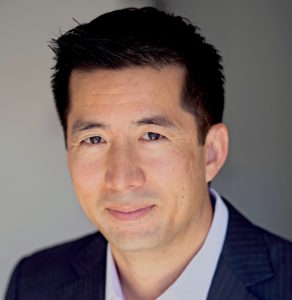Back in Control: Effective Treatment for Harm OCD – Part 4 of a 5 article series on Harm OCD

Harm OCD is an extremely distressing subtype of Obsessive-Compulsive Disorder that can have debilitating effects on one’s mental health.
To briefly review, in Part 1 of this series, we outlined some of the core themes of Control, Certainty, Responsibility/Guilt, and Character, which Harm OCD sufferers can get stuck questioning and doubting. In parts 2 and 3, we discussed some specific forms that Harm OCD can take, including unwanted pedophilic thoughts (part 2), and intrusive images or thoughts of harm to newborn babies (part 3).

So what can be done about these issues, and what does treatment look like?
Fortunately, as stated in previous articles, we have well established and effective strategies for helping people overcome Harm OCD, which we’ll highlight in this article. Essentially, successfully helping someone overcome Harm OCD typically entails a combination of 4 components: Education, Mindfulness, Thought restructuring, and Exposure with Response Prevention.
1. Education
Many people don’t know that OCD isn’t just about washing hands, checking locks, and compulsive perfectionism. So sometimes it can extremely helpful to merely explain to someone that their unwanted images of jumping off a bridge or stabbing a relative in the back are also a form of OCD.
Harm OCD sufferers are also frequently very comforted to hear expert confirmation that the mental or behavioral habits they’ve developed to “get rid” of their thoughts are destined to fail (which they’ve probably already discovered from their own experience). This empowers people by strengthening the idea that they’ll need to do something different from avoiding or neutralizing unwanted thoughts – and in turn, opens up the door for Exposure with Response Prevention (see below).
2. Mindfulness
I include Mindfulness as a key component of overcoming Harm OCD because it’s important for sufferers to intentionally practice a present mental state – versus anxiety-ridden obsessions which are typically future oriented. It also helps people become more conscious of the reality that we all frequently have a host of random, nonsensical thoughts swimming in our minds that don’t need to be taken seriously (i.e. a thought of impulsively jumping off a bridge can be seen as ridiculous as imagining a purple elephant with three eyeballs). As you experience this repeatedly, you often start to more clearly tease apart which thoughts are “real” and worth paying attention to, and which ones are obsessive, and lead down a trap of anxiety.
3. Thought Restructuring
People suffering with OCD can stay stuck until they come to a different relationship with their thoughts. An important part of this can be helping them examine the flaws in their intrusive, unwanted obsessions. Some important questions to consider when dealing specifically with Harm OCD might be:
- “How many, if any, violent acts have I previously committed?” (typically very few, or none)
- “Am I unhappy with my life, to the point that I would want to end it?” (usually not), and “Do I have a lot to live for?” (usually, yes)
- “Do I believe that hurting/murdering people is wrong?” (always yes)
Examining one’s past patterns and values can loosen one’s fixation on the idea that the obsessive thoughts about harm have any validity. In addition, Harm OCD sufferers might be challenged to estimate the probability that they would do the unspeakable act in their minds. Typically, when really examined closely the likelihood is extremely low to none – and it’s important to accept there may always be some small degree of uncertainty (e.g. “anything is possible”) in any situation.
A key thing to note is that people with OCD often are already examining their thoughts extensively on their own, and are certainly intelligent enough to reason with the flaws in their obsessions. So in some cases, going back over this in therapy is not an effective use of time. In other situations, just focusing on the logic and error in obsessive thinking may actually make someone’s symptoms worse, because trying to “reason” with OCD can become repetitive, compulsive, and feed the need for further rumination.
Nonetheless, examining and challenging one’s Harm OCD thoughts can still be very helpful, especially in making the case for Exposure with Response Prevention, which involves DOING and EXPERIENCING something different, since just thinking one’s way out of OCD is often not effective.
4. Exposure with Response Prevention
Exposure with Response Prevention (ERP) is the core piece of successful treatment for OCD, and is considered the gold standard in established research (See Abramowitz, J.S. The psychological treatment of obsessive-compulsive disorder. Canadian Journal of Psychiatry. 2006; 51:407–16). Essentially, obsessive thoughts and fears needed to be tested and debunked via direct confrontation (a.k.a. Exposure), and efforts to avoid, reduce, or neutralize the anxiety caused by those fears need to be cut out (a.k.a. Response prevention).
Where merely trying to reason with illogical obsessions can fail, ERP disproves them through actual experience, which in turn, can decrease the need for compulsions.
Earlier in this blog series, we mentioned some examples of exposure exercises for people dealing with Pedophilic OCD such as:
- Watching shows, videos, or viewing images of children
- Intentionally spending time in places where there are likely to be children (parks, malls, beach)
- Spending time with loved ones who are minors
We also described these examples of exposures for Perinatal/Postpartum OCD:
- Spend increasing amounts of time alone with baby
- Practice spending increasing amounts of time without checking
- Reduce and eventually refrain from any repetitive prayers to ensure baby’s safety
With many forms of Harm OCD, direct in vivo exposure isn’t feasible, so an alternative is
imaginal exposure, in which case a sufferer purposely and intentionally imagines the
worst case scenario obsession playing out. Some examples of imaginal exposure for
Harm OCD might include:
- Imagine oneself “snapping” and committing a mass murder
- Write out a detailed story of how a germ you spread on a doorknob sparked an outbreak of a disease that killed many others
- Picture oneself making a right turn in one’s car and accidentally striking and killing a pedestrian, and all the guilt and consequences that would ensue
Imaginal exposure’s effectiveness for OCD is similar to that of a vaccine for disease. By
repeatedly exposing oneself to the feared outcome through imagination, the fear decreases, inoculating the sufferer to the distress caused by the thoughts. For someone with Harm OCD, taking the sting out of their worst fear can make the uncertainty of their unwanted thoughts much more tolerable.
For more information about different types of Harm OCD and the process of treatment in therapy, continue reading on in our five part series:
Part 1 is a general description of the Harm OCD subtype.
Part 2 addresses Pedophilic OCD.
Part 3 addresses Postpartum/Perinatal OCD.
Part 5 highlights unique concerns that Harm OCD sufferers should be aware of.

Martin Hsia, Psy.D. is the Clinical Director of CBT SoCal, and specializes in helping people with OCD, Anxiety, and Insomnia in Glendale, CA.

Bella
Very helpful points. Thank you
Anynonomous
This really helped me understand that what I am doing is not just me, its how my brain is processing. I now realize that I myself am in control of what I do, not my fears. This is merely a temporary condition that I can be healed from. I love people, and never want to hurt anyone. That is my character, I know who I am, I am a follower of Christ and would never hurt anyone. I now realize that I am not being logical to be afraid of myself doing something bad, because I never had any desires to do bad and don’t want to even be associated with evil. Realizing that I am not alone, and this is treatable is a big help for me.
Anynonomous
Not Only do I not want to do anything bad, but I also realize that since I love people so much, and care about people, that having these thoughts is illogical because I am being afraid of something I have total control over, my own actions.
Anonymous
I suffer from POCD and you have no idea how relieved I am to know that this is just in my head and that with proper treatment these thoughts can go away. I was even scared to look this up on the internet because of how ashamed I was. I’m glad i did though, and knowing that I will never damage children in any way is sooo relaxing. POCD it’s serious, don’t get me wrong, but there’s a lot of difference between that and actually being a pedophile.
There’s a long path to overcome but I feel so much more confident and empowered now!
Thank you so much Dr Hsia!
Martin Hsia
We are so glad this article normalized your experience. Indeed, knowing clearly the difference between OCD and actual pedophilic tendencies is crucial. Best of luck!
Carlos R
I’ve been struggling with these thoughts for a few weeks now. Been feeling really guilty about it. I finally did some research and came across this. I don’t know why but the tears started as I was reading it. In some way it made me feel like I was normal. Thank you
Martin Hsia
I’m so glad you found this article, and that it spoke to you. It’s so tempting to believe that everything we think about represents some actual desire or “real” aspect of our character, but this is a true challenge of suffering with OCD – learning to detach secondary meaning from these unwanted thoughts.
Jessica
Reading this has brought such relief to my mind and heart. I recently had a beautiful baby girl. I’ve been suffering from anxiety for a long time. Due to this, I also lost my thyroid (cancer) and it doesn’t really help the anxiety and panic attacks. I started having intrusive thoughts and they make me throw up and even upset my stomach. I’ve also noticed that I start coughing a lot because of my heart racing so bad. It’s comforting to know that I’m not the only one going through this. That this is something I can overcome. I was ashamed to even look this up. I love my baby and would never do anything to harm her. Thank you Dr. Hsia for this and for your work towards mental health awareness.
Martin Hsia
Congratulations, and I’m sorry to hear of all of the other challenges you’ve been facing – but I’m glad this article was helpful in encouraging you as a parent of a little one!
Jackie C
For me, it began postpartum. I struggled with Harm OCD for about 3 years postpartum, and then medication seemed to be working well for about 6 years. I relapsed 4 years ago, and have tried several types of medication without any success. I have also tried therapy and have not been successful. What do you recommend?
Martin Hsia
It’s hard to say what to recommend without speaking directly and having a full intake assessment, but one question to consider would be if the therapy you’ve received was from an OCD specialist – namely, someone trained in Exposure with Response Prevention.